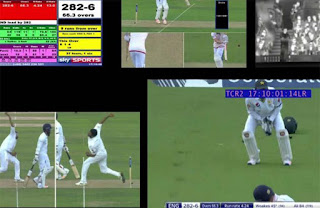Thakur casts doubt over mini IPL
There were talks of holding a mini IPL in the USA or UAE
BCCI president Anurag Thakur has said the board has put any plans for a mini IPL in the USA on hold, with T20 internationals being the preferred foray in the American market. The key obstacle, according to Thakur, was the time zone difference. Matches would need to start at 10am local time on the east coast in the USA, making mid-week fixtures difficult to draw big crowds and also limiting their options for alternate venues around the country.
"I think we must understand the time difference," Thakur told ESPNcricinfo. "IPL is seen in India from 7 o'clock to 11 or 11.30 at night. So you have to play somewhere in the east coast here (USA) so [that] the timing matches. If we have to play in the day here, the matches should be seen in India at night because broadcasting is a big thing. So you can't make your home fan lose [by] playing outside India. So which are the provinces you can play in United States? That's a big task.
"IPL, we are not even thinking of hosting it outside India. It has to be hosted in India, but there are many other options what you can do which we'll let you know over a period of time when we come out with a long-term plan for this market."
The BCCI had announced the idea of a "mini IPL" or "IPL overseas" in June when Thakur had said the board would host the tournament in September. A final approval was awaited after talks with franchises and broadcasters but no announcement has been made yet. During informal conversations with the BCCI, though, top officials have pointed out bizarrely that Thakur had never announced any plans for a tournament called "mini IPL."
The USA and UAE were options being discussed at the IPL governing council and working committee meetings earlier this year. "We have to look into various details: which country we can play in, how many teams, how many players should participate, who will be the broadcaster - all these issues need to deliberated, but we are keen to play in that [September] window," Thakur had said in June.
The BCCI had been trying to fill an empty window as India are not scheduled to play any cricket till the home Tests against New Zealand start on September 22.









